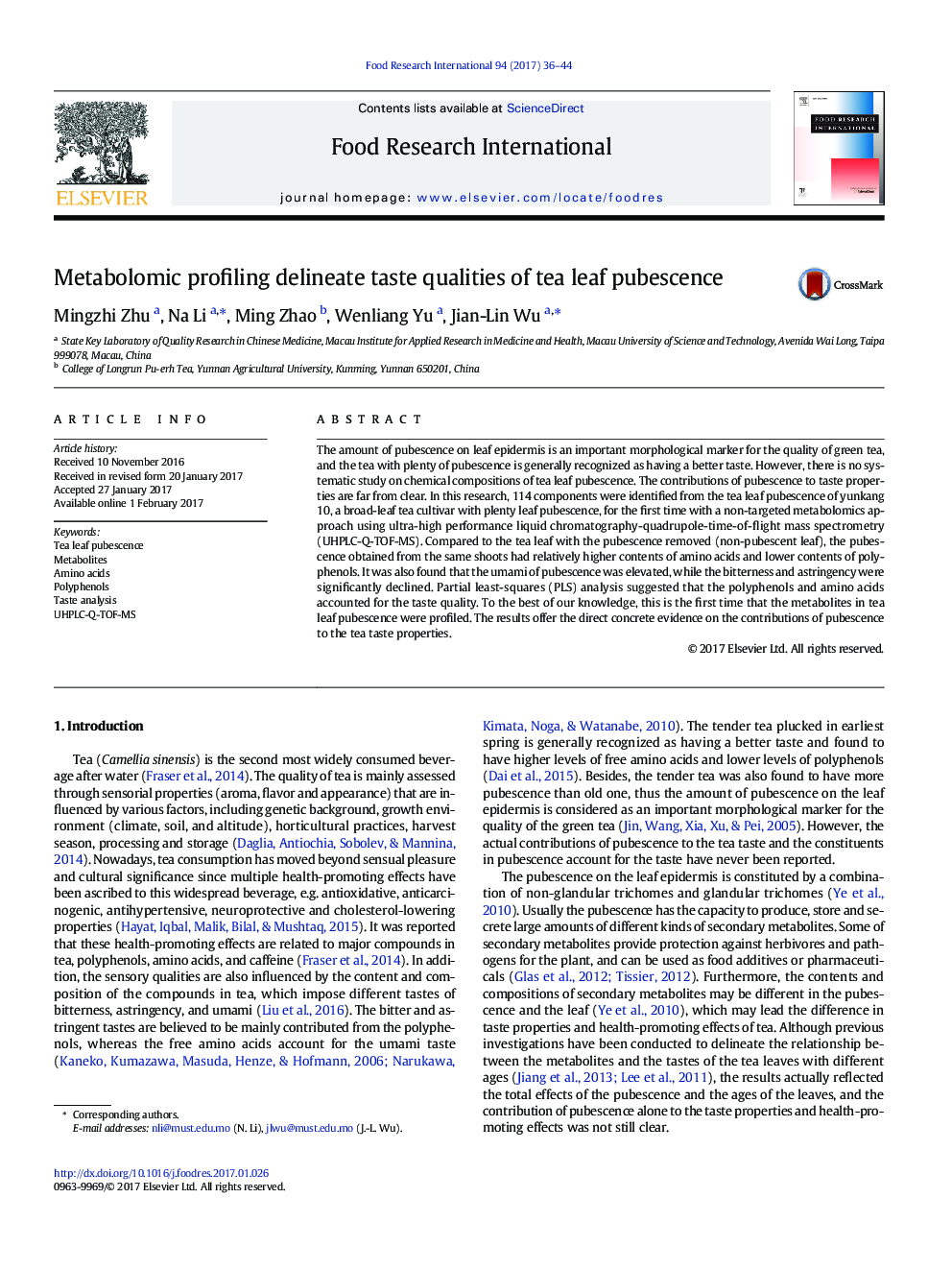| Article ID | Journal | Published Year | Pages | File Type |
|---|---|---|---|---|
| 5768283 | Food Research International | 2017 | 9 Pages |
â¢Metabolites in pubescence of tea leaf firstly identified by metabolomics approach.â¢Pubescence had higher umami and lower bitterness and astringency than non-pubescent leaf.â¢High level of amino acids and low level of polyphenols account for taste difference.â¢First direct evidence on contributions of pubescence on tea taste properties.
The amount of pubescence on leaf epidermis is an important morphological marker for the quality of green tea, and the tea with plenty of pubescence is generally recognized as having a better taste. However, there is no systematic study on chemical compositions of tea leaf pubescence. The contributions of pubescence to taste properties are far from clear. In this research, 114 components were identified from the tea leaf pubescence of yunkang 10, a broad-leaf tea cultivar with plenty leaf pubescence, for the first time with a non-targeted metabolomics approach using ultra-high performance liquid chromatography-quadrupole-time-of-flight mass spectrometry (UHPLC-Q-TOF-MS). Compared to the tea leaf with the pubescence removed (non-pubescent leaf), the pubescence obtained from the same shoots had relatively higher contents of amino acids and lower contents of polyphenols. It was also found that the umami of pubescence was elevated, while the bitterness and astringency were significantly declined. Partial least-squares (PLS) analysis suggested that the polyphenols and amino acids accounted for the taste quality. To the best of our knowledge, this is the first time that the metabolites in tea leaf pubescence were profiled. The results offer the direct concrete evidence on the contributions of pubescence to the tea taste properties.
Graphical abstractDownload high-res image (104KB)Download full-size image
